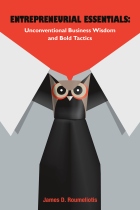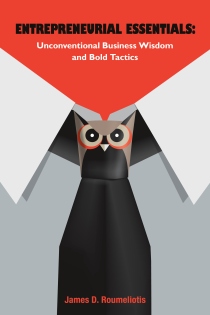Correct link: https://bit.ly/3ew7I56

Recently, I followed a Linkedin luxury sector group thread. Discussion centered on the appropriate manner clients should be treated by sales personnel in a luxury retail shop such as Gucci.
To my astonishment, one participant, posing as an expert stated that salespeople at such boutiques should be snooty. The reason given was that this attitude was part of the luxury cachet.
How ludicrous and puerile, I thought.
In my experience, this is precisely what you should not do. Whether you spend $10,000 or more on a Rolex or $20,000 or more at Hermes all clients should be treated with respect. Period. Aspiration and negative attitude sales pitches are not only counterproductive, but they are also destructive. (I might add, that this should be true of all human interaction and not just the act of buying luxury products.)
Does Luxury Really Have Meaning?
Luxury was never about price. This is an outdated concept built on a social model which is incompatible with democratic values. It is about brands, which are authentic. Authenticity implies function, design, intrinsic value, and in certain cases heritage and pedigree.
Luxury must provide the right experience.
Sophisticated customers want the wow factor.
This means touching the heart and dazzling the senses. When done in this manner, the client feels their lifestyle enhanced. Yes, I know, like you do that a product is just a thing. However, things act as a trigger and can alter perception, inner balance, and outer harmony.
Look at the keys to luxury brand management and you will recognize the essentials in selling aspiration:
1) Self-expression and sense of self
2) Exceptional treatment and experience when in the act of purchase
3) Craftsmanship=Quality
4) Authenticity
5) The Rarity Factor
6) Emotional Bonding
7) Mystique
To achieve these elements the brand must be expert storytellers. One of the grand storytelling kings, Ralph Lauren, understands this like the lines on his hand.
Exceeding Expectations
Luxury goods are not sold the same way as mainstream products. It’s not enough to simply introduce and sell a luxury brand surrounded by a fancy store with design-inspired display cases either. Consumers of luxury brands tend to have higher expectations than that of traditional consumers. They are discerning and sensitive to questionable tactics, as well as intolerant when comes to aggressive salespeople.
The attitude, product knowledge, and overall delivery/presentation of the product by the sales consultant/brand ambassador all play an equally important role. This translates to a well-educated, skilled staff having good communication skills, a high level of presentation skills, and a customer-centric approach.
A study by The Luxury Institute, in New York, finds that Burberry and Bottega Veneta excel far better in CRM (Customer Relationship Management) than other companies. Their key findings were under the title:
“Leading Edge Insights Into The World Of The Wealthy”
Sales associates should be employed from related luxury brands and products, with consideration given to those in the service sector such as hospitality or premium airlines: Singapore Airlines, Swiss Airlines, Emirates, and others — or perhaps from premium apparel brands and high-end cosmetic brands. One thing is certain: Training ought to be based on specific brand requirements.
As more luxury brands open their own retail outlets to stand apart, they need to better control sales channels, image, and front-line personnel.
One cannot stress enough for Sales teams to have the right training.
For new sales hires not familiar with selling luxury brands, a company has to invest to train them and ensure occasional retraining including recap courses. Luxury sales training should include:
– In-depth product knowledge – specifically how it will help satisfy the customer’s needs;
– Focus on the customer – who they are, what they like/dislike, determine needs, motivations and preferences;
– Exceed customer expectations by delighting and surprising;
– Appeal to client emotions;
– Never put down the competition.
Ultimately, craftsmanship, design innovation, exclusivity, and pedigree sell themselves. Correct sales attitudes should personify the luxury branded products and it becomes in the client’s eyes a done deal.
Selling, or Rather, Storytelling with Product Knowledge and Finesse
Consumers today are sophisticated when it comes to shopping – thanks primarily to the internet where information on just about any product can be researched and used for comparison purposes. Consequently, when a prospective client walks into a store, he/she is armed with knowledge – which is why the sales professional should be product proficient and adept at assisting and guiding the client to the purchase by making use of flattery, romance, and showmanship. Charisma is an asset.
To illustrate, if a sales consultant, wearing a pristine white pair of gloves is presenting, for instance, a Chopard watch, he/she will utilize terms with finesse and avoid using language which discusses a specific price tag. In its place, the word “value” can be used. Instead of calling the product an obvious “watch”, the sales consultant can say, “timepiece”, “masterpiece” or simply pronounce the model name. It should then be demonstrated in a dazzling manner emphasizing its innate qualities and timeless design with functionality – amongst other features that focus on one’s sentiments.
When selling a niche automobile such as a Porsche, the sales professional can talk about racetracks, describe road-holding capabilities, and build up a fascinating story – after which time he/she can bring up reliability and the technical details which confirm to the discerning client what he/she is already aware of.
Hiring Selection Process: Who Should Make the Cut?
When seeking to hire sales consultants, there should be a set of criteria established to ensure a successful performance. The people selected for the end-user contact should have the following characteristics:
1) Retail sales experience in a luxury environment;
2) Empathetic: expertise in establishing customer relationships that translate into sales;
3) Image: proper attire and fashion accessories, verbal communication, and grooming. Clients should see the brand made manifest so it has a personal connection;
4) Skilled at the emotional aspects of a sale: bond with customers so that relationship leverage is genuine;
5) Passionate and Professional mindset;
6) Highly collaborative: knows how to work with and through others in a team-based environment;
7) Entrepreneurial, competitive, self-confident, and self-motivated.
Discounted Luxury is an Oxymoron
Under no circumstances should luxury brands be discounted. They need to stick to their true sense of meaning and heritage. By cutting prices, brands risk changing the quality-price relationship in the customer’s mind. This practice normally stems from sales consultants, who may not be convinced that the particular luxury goods offered for sale actually merit the price.
Such an attitude can be tricky to navigate effectively. Customers need to believe otherwise they question and the product is devalued in their eyes. Salespeople, who are not up to this aspect of brand personification should not be hired.
Price discounts should be a tactic of last resort.
A robust alternative is to offer gift items or bonuses such as complimentary tickets to Art exhibitions, gift certificates, or access to a coveted local restaurant.
Employ Mystery Shoppers
In the retail brand experience, nothing should be taken for granted. In a progressive customer-driven entity, training and developing human assets should be an ongoing process. Moreover, brands should be an enemy of the status quo.
Hiring mystery shoppers to gauge the total sales cycle approach and report back their experience to management should not be ignored.
Another suggestion is for the luxury boutique owners to hire a third party such as a consultancy firm, which specializes in the high-end retail domain, to shadow the sales consultants and evaluate their performance.
Both techniques need to be conducted with frequency. How can you understand what the client expects by acting and gauging behavior in the field? You can’t.
The Final Take
Remember, a luxury sales professional does not pressure customers to buy.
He/She plays the role of a luxury purveyor and advisor – someone who is an expert product consultant and keeps a client’s best interests at heart. By demonstrating value, a sales consultant establishes himself/herself as a professional.
It’s about establishing a person-to-person relationship as opposed to a salesperson-to-customer relationship.
In today’s economy, service has become a core competitive advantage. Hiring the right people and training them to sell properly, increase sales and retain the brand’s luster should all be part of its ongoing ambitions.
Sophisticated customers want products that dazzle their senses, touch their hearts and stimulate their minds – which they can relate to and can incorporate into their lifestyles. The degree to which a luxury product is able to deliver a desirable customer experience is vital.
__________________________________________________
Request your TWO FREE chapters of this popular book with no obligation.







































































